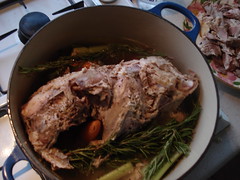While I was meeting with the woman who runs the Love Food, Hate Waste (LFHW) site in England, the dining services folks at UC Davis used that very slogan as the title for their report/how-to-manual/call to action. Good for them!
“Love Food, Hate Waste” is really worth browsing through, as it has a little bit of everything. And if you’re a school administrator, dining director or sustainability coordinator, I’d recommend thinking about using that document as a guide.
Speaking of my meeting in Banbury, England at the offices of WRAP (who run LFHW), I asked, but they wouldn’t tell me any other possible names for the site. Apparently, it was suggested early on in the process, then they never found anything else that  captured the message quite so well.
captured the message quite so well.
Love Food, Hate Waste really does say it all, as illustrated by Davis dining services’ borrowing it.
Another thing I learned is that WRAP found the “food lovers” who appear on their home page and resemble food items (potatoes, apples, pasta) by having a casting company put out calls for specific looks. So: ‘We need a guy who looks like a potato.’ And they sure got one! (and I’m told that the stout dude pictured here is on TV in Britain…)
 as part of a composting demo organized by the County recycling team. I’m guessing the county carted away the pile after the cameras left. And hopefully these were already cooked down to make soup or stock.
as part of a composting demo organized by the County recycling team. I’m guessing the county carted away the pile after the cameras left. And hopefully these were already cooked down to make soup or stock. meet its goal of composting 60% of food waste by 2012. Since Quebec is only at 12% now, they realized drastic change was needed.
meet its goal of composting 60% of food waste by 2012. Since Quebec is only at 12% now, they realized drastic change was needed.